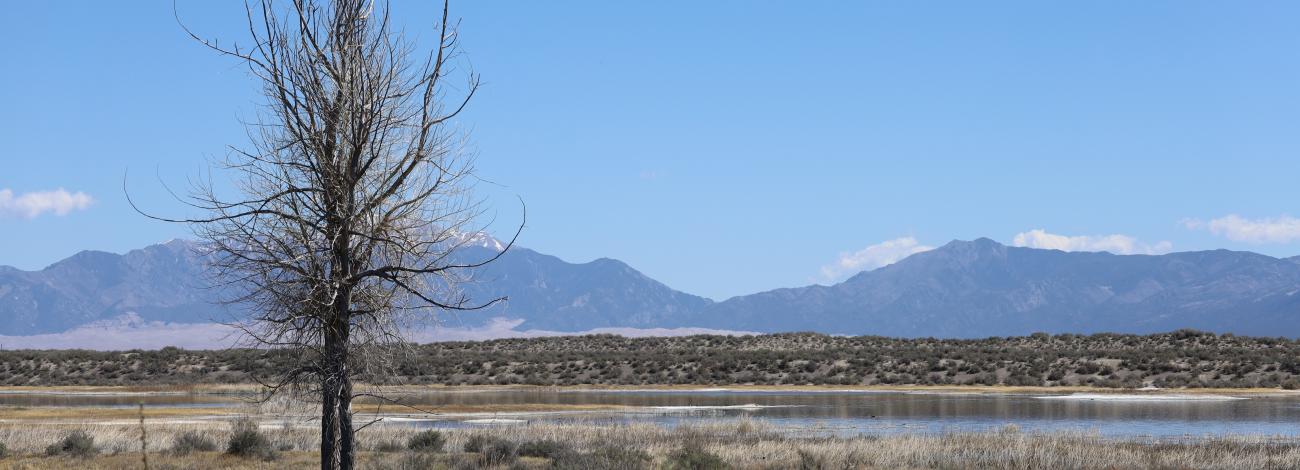
BIL/IRA Project Status
Inflation Reduction Act Projects
As part of the President’s Investing in America agenda, the Bureau of Land Management will invest $11.1 million from the Inflation Reduction Act for the protection and conservation of wildlife habitats and recreational opportunities on public lands in Colorado. This funding will be focused in two landscape areas called the San Luis Valley and North Park Restoration Landscapes.
This funding is part of the BLM’s announcement to invest $161 million in ecosystem restoration and resilience on the nation’s public lands. The work will focus on 21 “Restoration Landscapes” across 11 western states, restoring wildlife habitat and clean water on public lands and strengthening communities and local economies.
- San Luis Valley
Ecologically critical wetlands and riparian areas provide habitat for numerous birds and federally listed species, and the area is sacred to a number of Tribes. Investments in restoring this landscape provide a unique opportunity for the BLM to conserve and restore wildlife habitat and fisheries, improve hunting and fishing opportunities, and foster climate resilience while benefiting historically underserved, disproportionately impacted communities. Projects will protect cultural and historic resources, expand recreational uses, and manage fuels and water resources at the headwaters of one of America’s great rivers, the Rio Grande.
Blanca Wetlands, San Luis Valley - North Park
The landscape of North Park is one of the best places in the state to visit and experience core sagebrush habitat. These sagebrush communities, home to one of the largest wetland complexes in Colorado, are at high elevations that are more resilient to impacts from a changing climate. The landscape boasts critical winter range and migration corridors for big game, and numerous culturally significant sites, including the Northern Ute Trail. Investment in aquatic, riparian, wetland and terrestrial habitat improvements, fuels reduction and invasive species management will preserve historic and cultural sites and enhance recreational opportunities.
Mourning Dove in the Sagebrush steppe of North Park
Bipartisan Infrastructure Law Projects
The Bipartisan Infrastructure Law was signed into law on November 15, 2021 and provides funding to improve public lands. In February 2024, the BLM announced a $41 million investment for ecosystem restoration, including nearly $3 million to Colorado for projects that focus on partnerships, wildfire resiliency, and riparian restoration.
- Northwest District Fuels Treatment
Bipartisan Infrastructure Law (BIL) funding has supported a number of fuels treatments projects on public lands in the Northwest District. These public lands are susceptible to catastrophic wildfires due to several years of drought, overpopulation from wild horses, and impacts from climate change.
Before and after images from the Piceance Basin mastication project. - Deer Haven Fuels Treatments
Completed in 2023, staff from state, local, and federal agencies completed a prescribed burn on the Deer Haven parcel northwest of Canon City.
BLM's Engine 4652 and Colorado's Division of Fire Prevention and Control working side by side to complete the prescribed burn.
- Good Neighbor Authority
With the help of BIL funding, BLM has been able to reduce fuels on federal, state, and private lands through partnerships and agreements. While the broken or isolated land patterns of BLM lands in the Rocky Mountain District can make these areas hard to treat. Partnerships under the Good Neighbor Authority have allowed us to expand our treatment areas and provide safer, better experiences for the public.
The Grand Canyon Hills mastication and seeding started in 2021 and is an ongoing project through the GNA. Funds contributed by the Muley Fanatics Foundation made this partnership possible with BLM, the State, and the National Wild Turkey Federation to improve the landscape. - Dolores River Restoration
BLM and our partners recently finished the treatment of 4,000 acres of noxious and invasive weeds. BLM plans to continue funding restoration projects in the Dolores in the coming years.
The Dolores River in the winter.






